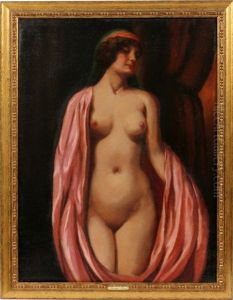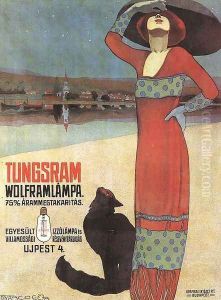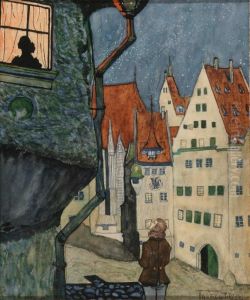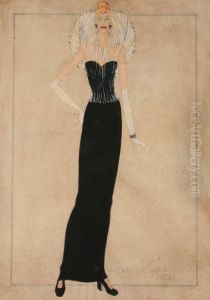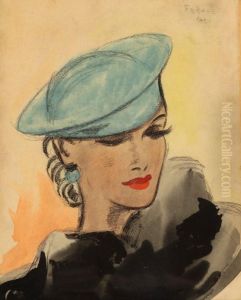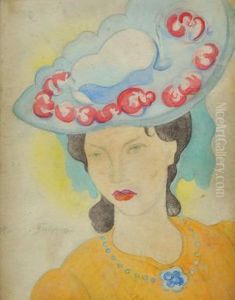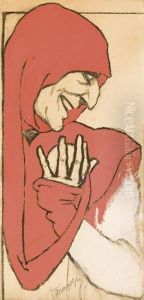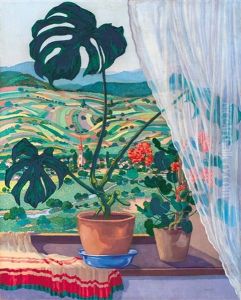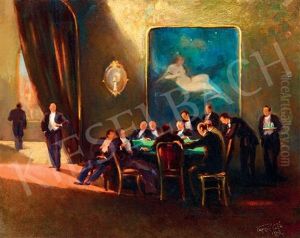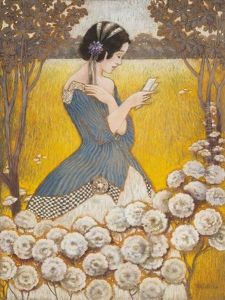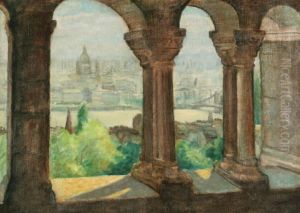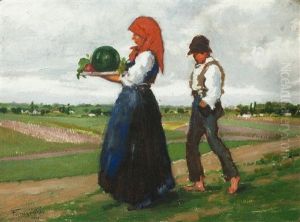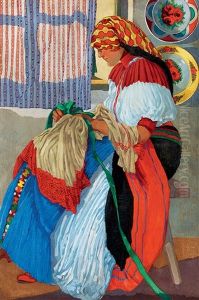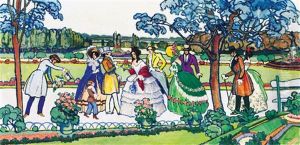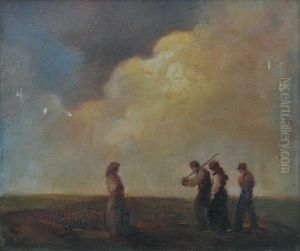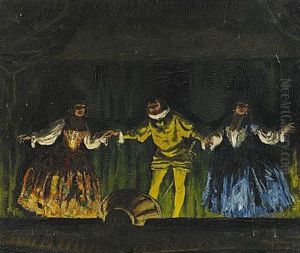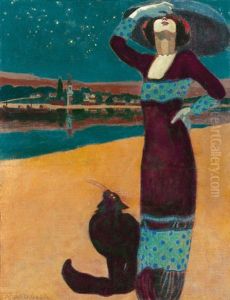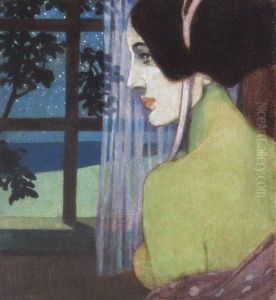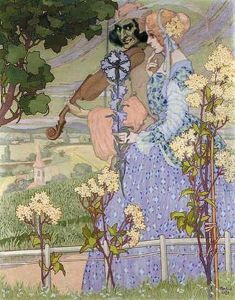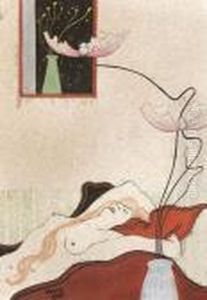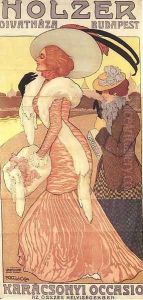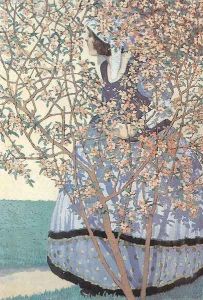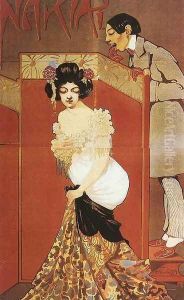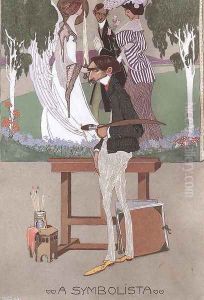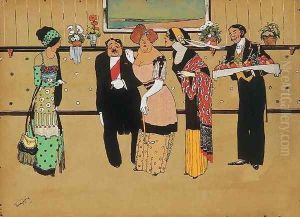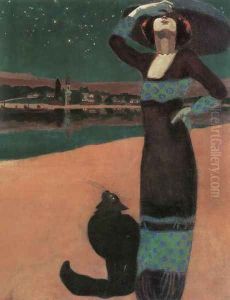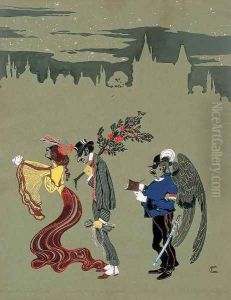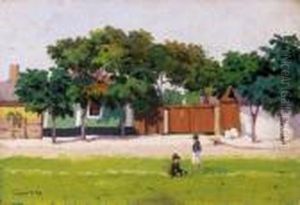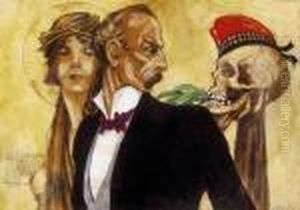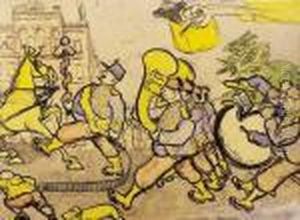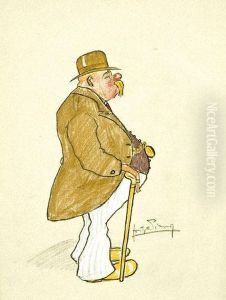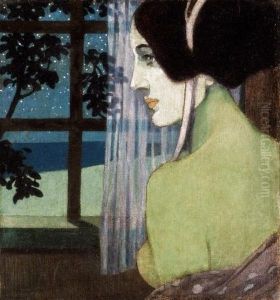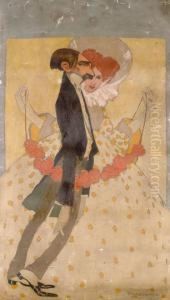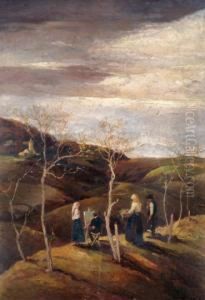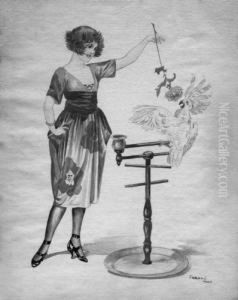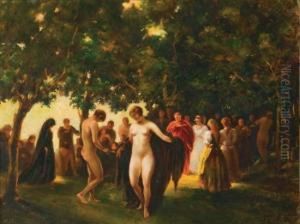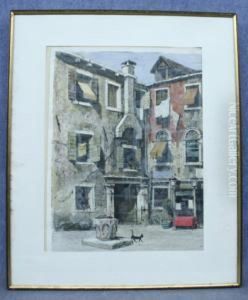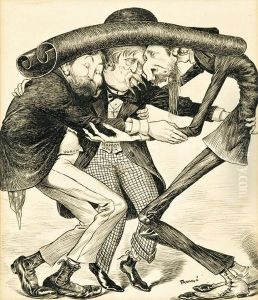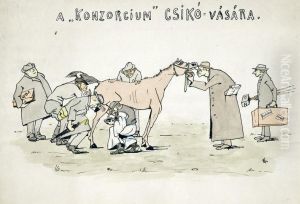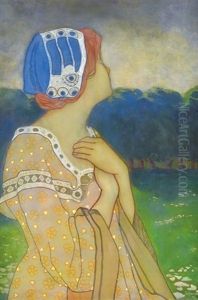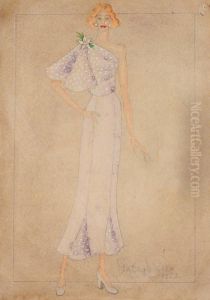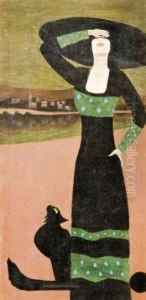Geza Farago Paintings
Geza Farago was a Hungarian artist and designer, known for his contributions to Art Nouveau and the Secession style. Born in 1877 in Budapest, Hungary, Farago showed an early talent for the arts and pursued a formal education to hone his skills. He studied at the Mintarajziskola, the school of model drawing in Budapest, and later at the Académie Julian in Paris, where he was influenced by the flourishing Art Nouveau movement.
Farago's work encompassed a variety of mediums including painting, graphic design, and illustration. He became particularly noted for his poster art, where his sophisticated and decorative style captured the elegance and spirit of the Art Nouveau era. His posters often featured graceful figures, floral motifs, and sinuous lines, which were characteristic of the movement.
In addition to poster art, Farago also worked on book illustrations and designs for various publications. His illustrations often included intricate details and a sense of fantasy, which were well received by the public and critics alike. He was part of the movement that sought to break down the barriers between the fine and applied arts, promoting a philosophy that art should be a part of everyday life.
Farago's career was also marked by his role as a teacher. He shared his knowledge and skills with a younger generation of artists, ensuring that his influence on Hungarian art would continue beyond his lifetime. Throughout his career, he exhibited his work in various shows, both in Hungary and internationally, gaining recognition for his contributions to modern art.
Geza Farago's legacy is preserved through his artworks, which continue to be celebrated for their beauty and historical significance. His contributions to Art Nouveau and the Secession movement have made him an important figure in the history of Hungarian art. Farago passed away in 1928, leaving behind a rich body of work that continues to inspire artists and designers around the world.
